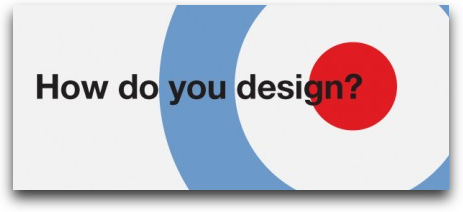Everyone designs …
This blog has taken a little rest over the holidays (and some time after that too, oh my), but now I am back in full swing. Let’s start the new year with design-related stuff, shall we?
This is no coincidence, as the DesignCamp Cologne is sneaking up and I must prepare a session still.
So here’s some of the design-thinking things I found and bookmarked lately:
Via Anders Hemre a noteworthy addition to the open innovation and design thinking memes dealt with in this blog before. Open by Design: The role of design in open innovation, quoting from the executive summary:
In this study, we have two linked objectives: (1) to capture a better understanding of what we mean by “open” styles of innovation and how these can be defined, and (2) to test whether firms need design capabilities and a suitable sectoral fit to be open. […] Design, for this research, reflects an instrumental rather than aesthetic goal for its role in negotiating the partitioning and interfaces in innovative tasks, suggested in the open innovation model.[…] The approach has been to treat open innovation as a general tendency with multidimensional forms of expression, when it may be (and other authors have suggested) an umbrella term for different organisational behaviours which have meaning in different contexts. […] Design not only makes task partitioning possible but, more generally, the range of innovative activities with external sources suggested by the open model of innovation. Just as absorptive capacity matters for technology transfer, design capacity matters to the practice of open innovation strategies because of the importance of interfaces in task partitioning. Specification of tasks and task interfaces is achieved by design – organisational design in the specification of tasks and technical design in the task interfaces. […]We set out to test: H1: ‘Open’ innovators need more developed design capabilities to manage innovation across organisational boundaries. H2: Open patterns of innovation will vary by sector, reflecting differences in market conditions, opportunity (technological and organizational) and organizational structures for innovation. […]
As Anders writes:
Open innovation may appear as a business choice that firms make based on assessing their own innovation capability in view of strategy and objectives. This may of course be the case, but there may also be more fundamental reasons involved for a shift towards open innovation.
Indeed, there’s much to think about organizational design in open innovation programs, e.g. Pascal Finette notes and wonders why some of the archetypical best-practices aren’t that open at all (granted, he also writes about the not so easy task of building a prototype, here’s an isssue designers can contribute and I promised you design stuff up there):
“when you look at Open Innovation initiatives from companies like Procter & Gamble (P&G Connect) you quickly understand that what they label as Open Innovation, is more a model to buy outside innovations and sell internal, unused intellectual property than an open system fostering dialog and user created innovation.”
On another note, check out Ralf Beuker’s notes on incremental innovations and design (“The future of Innovation“):
Let me shortly illustrate my point by showing how Design is facilitating these incremental innovations at Apple Computer. At Apple products you hardly see Design elements as means to make things simply look pretty. Instead they address functions and solutions that make the user feeling ‘Wow!’. Just a few examples are the magnetic power adapter that prevents the computer from accidentally being dragged down, the smooth scroll on the iPhone making searches more ‘real’ or the simplicity of the iMac (one body, a mouse and keyboard). What they stand for is a shifting focus from simply applying new technology (for technology’s sake) to delivering meaning and value by design instead.
 Finally, for more design ideas check out Hugh Dubberly’s “How do you design?” and get the pdf. This is an ‘unfinished’ book with a collection of over hundred descriptions of design and development processes, from all kinds of business areas, like e.g. architecture, industrial design, mechanical engineering, quality management, and software development too.
Finally, for more design ideas check out Hugh Dubberly’s “How do you design?” and get the pdf. This is an ‘unfinished’ book with a collection of over hundred descriptions of design and development processes, from all kinds of business areas, like e.g. architecture, industrial design, mechanical engineering, quality management, and software development too.
From the blurb:
“Everyone designs. The teacher arranging desks for a discussion. The entrepreneur planning a business. The team building a rocket.
Their results differ. So do their goals. So do the scales of their projects and the media they use. Even their actions appear quite different. What’s similar is that they are designing. What’s similar are the processes they follow.
Our processes determine the quality of our products. If we wish to improve our products, we must improve our processes; we must continually redesign not just our products but also the way we design. That’s why we study the design process. To know what we do and how we do it. To understand it and improve it. To become better designers.”






Hi Martin,
This is an interesting collection of excerpts. Personally I strongly believe that “design” (in a broader sense) is the next frontier in Open Innovation — you currently see mainly scientists and engineers being involved in the wider space of Open Innovation (e.g. code contributors to Open Source projects). The moment designers start contributing in this area on a wider scale, we will see extremely interesting and very likely successful products and services emerge. It will be interesting to watch this space, help facilitate these communities and projects and contribute to it.
~Pascal